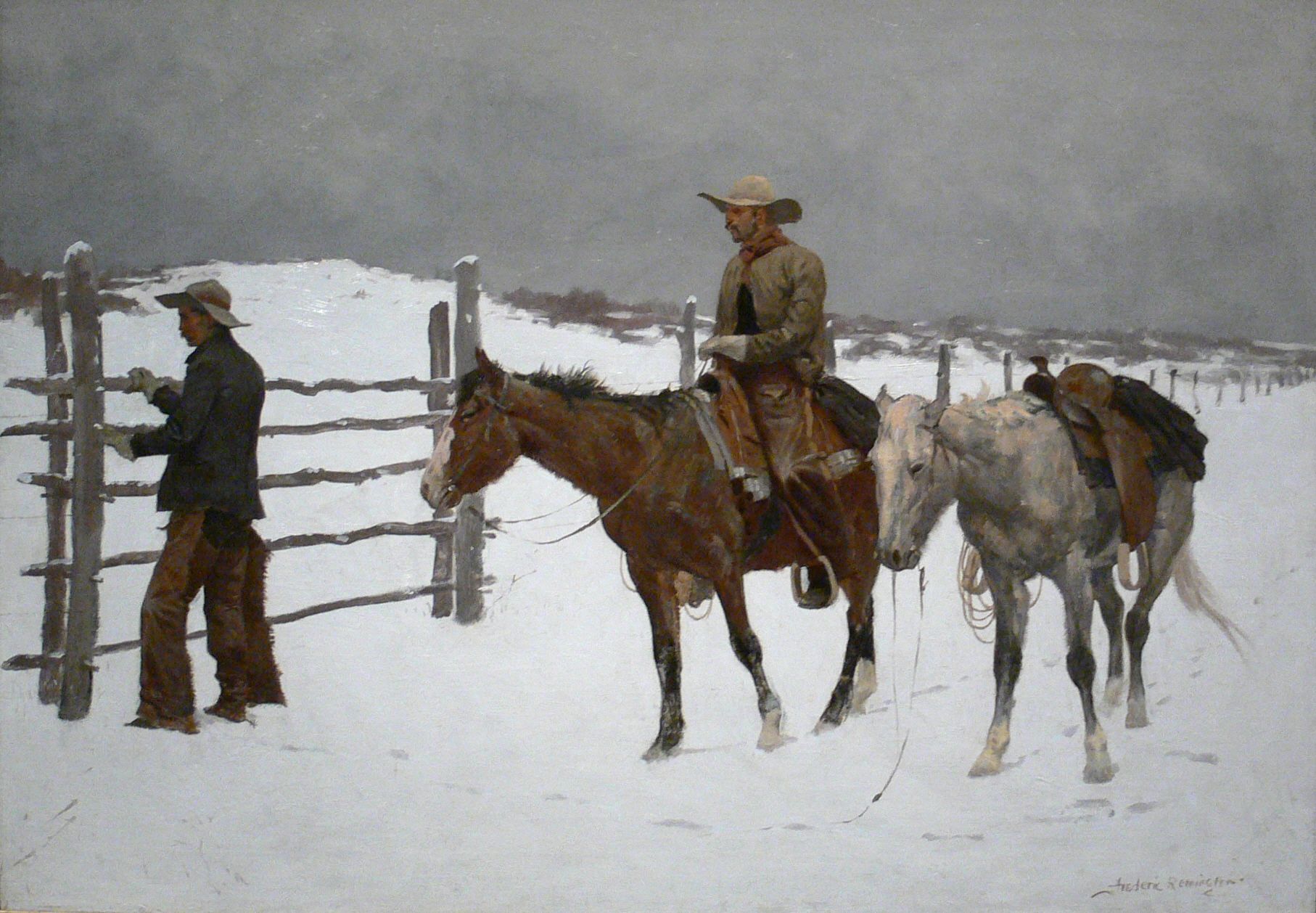
What You Need to Know About Frederic Remington’s “The Fall of the Cowboy”
“The Fall of the Cowboy,” painted in 1895 by Frederic Remington, is a somber representation of the demise of cowboys in the American West. It offers the dying lifestyle, which was once a prominent symbol of freedom, both sympathy and respect.
Remington is known for depicting the old west in his art, often painting cowboys, Native Americans, and the U.S. Cavalry. You can learn more about Remington’s work and other cowboy paintings from Fine Art Publishing.
Continue reading to learn more about “The Fall of the Cowboy.”
Description of “The Fall of the Cowboy”
“The Fall of the Cowboy” depicts two cowboys in traditional garb. One of the men has dismounted from his horse and is opening a gate made of barbed wire. The fence divides the painting in half and seems to be endless.
Remington used a muted pallet to create a melancholy composition incorporating an overcast sky and snowy fields. The lack of fluidity and movement produces a quiet, almost eerie quality.
Death as a Theme
During the late 1800s, cowboys were experiencing a dramatic transformation. Once a mythic figure which embodied freedom in the American West, cowboys were becoming redundant.
For decades, cowboys drove cattle across long distances to railheads and then transported them to slaughterhouses. However, the invention of barbed wire and the expansion of the transcontinental railroad put them out of business. Additionally, public grazing lands became private, leading to the demise of the American cowboy.
“The Fall of the Cowboy” demonstrates what cowboys were reduced to during this time, as technological advancement largely diminished their responsibilities to opening and closing gates. The division created by the fence illustrates the transition into this new era, with the figures understanding that they are now condemned to extinction in the wake of American progress.
Historical Links
During the mid-1800s, manifest destiny was enacted, presenting the idea that the fate of the United States was to expand across North America. Once viewed as a place of freedom with vast open lands, the frontier era had ended by the turn of the century.
“The Fall of the Cowboy” beautifully captures the period when this occurred. Previously depicted as wild, rugged, and unrestrained, this painting illustrates the aftermath of the expansion. These cowboys are nearly unrecognizable compared to previous portrayals, as they appear more subdued and seemingly caged-in.
Background of “The Fall of the Cowboy”
In 1895, Remington was friends with Philadelphia writer Owen Wister. He advised Wister to write about the end of the cowboy era, ultimately leading to an article printed in Harper’s Monthly. The Evolution of the Cow-Puncher was published alongside several illustrations, including Remington’s painting “The Fall of the Cowboy.”
Several years later, the painting gained attention again when it was published in Wister’s noteworthy novel, The Virginian. “The Fall of the Cowboy” is currently on display at the Amon Carter Museum of American Art.
Learn more about the “Old Stagecoach” and other significant art from this period in history by viewing our Fine Art Publishing collections or calling us today at 520-274-4992.